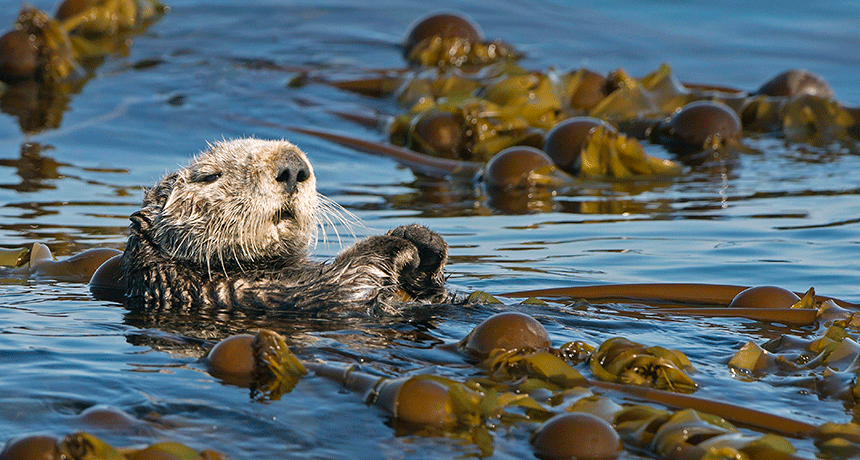algae These are simple organisms that were once considered plants (they aren’t). As aquatic organisms, they grow in water. Like green plants, they depend on sunlight to make their food.
blade (in biology) The flat, expanded part of a leaf of grass. In algae, a blade refers to the leaf-like part of kelp. (in machinery) The broad part of a machine that comes into contact with a material that is to be moved, such as the blade of a turbine coming into contact with air or water. A blade can also refer to the cutting part of an instrument such as a knife.
forest An area of land covered mostly with trees and other woody plants.
holdfast (in biology) A part that allows a plant to cling to a surface, such as a vine to a tree trunk. In algae, a holdfast is the root-like part of kelp that attaches to the seafloor.
kelp A type of large seaweed that is usually a type of brown algae. They grow underwater and form large forests, providing habitat for many organisms. Some kelp forests are so large they can be seen from space.
organism Any living thing, from elephants and plants to bacteria and other types of single-celled life.
sea An ocean (or region that is part of an ocean). Unlike lakes and streams, seawater — or ocean water — is salty.
seaweed Large algae growing in the sea or on rocks below the high-water mark.
sponge A primitive aquatic animal with a soft, porous body.
stipe This is a stem-like part of kelp or the stem-like trunk of a mushroom. It is called a stipe instead of a stem because kelp and mushrooms are not plants, but algae and fungi.
urchin Small, spine-covered sea animals without eyes or limbs which are related to sand dollars and starfish.








